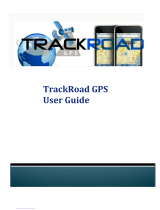
Placing Your Device
*Place in green zones for best results.
Your Spark Nano will always
give the most accurate
location data when it has
a clear view of the sky. It is
capable of transmitting and
receiving through materials
like glass, plastic, and cloth,
but is not able to transmit
through metals. Keep this in
mind when placing the device.
Avoid placing the device in the trunk of a vehicle. It may or may not report from a
glove compartment or underneath a seat. This interference can vary from vehicle to
vehicle, however, as all automobiles are constructed differently.
If
you want to track covertly, the Weatherproof Magnetic GPS Case may be the
best solution for you. When placing the device beneath a vehicle, be sure that the
side with the LEDs is facing down, towards the ground, and that it is as close to
the edge of the vehicle as possible.
























